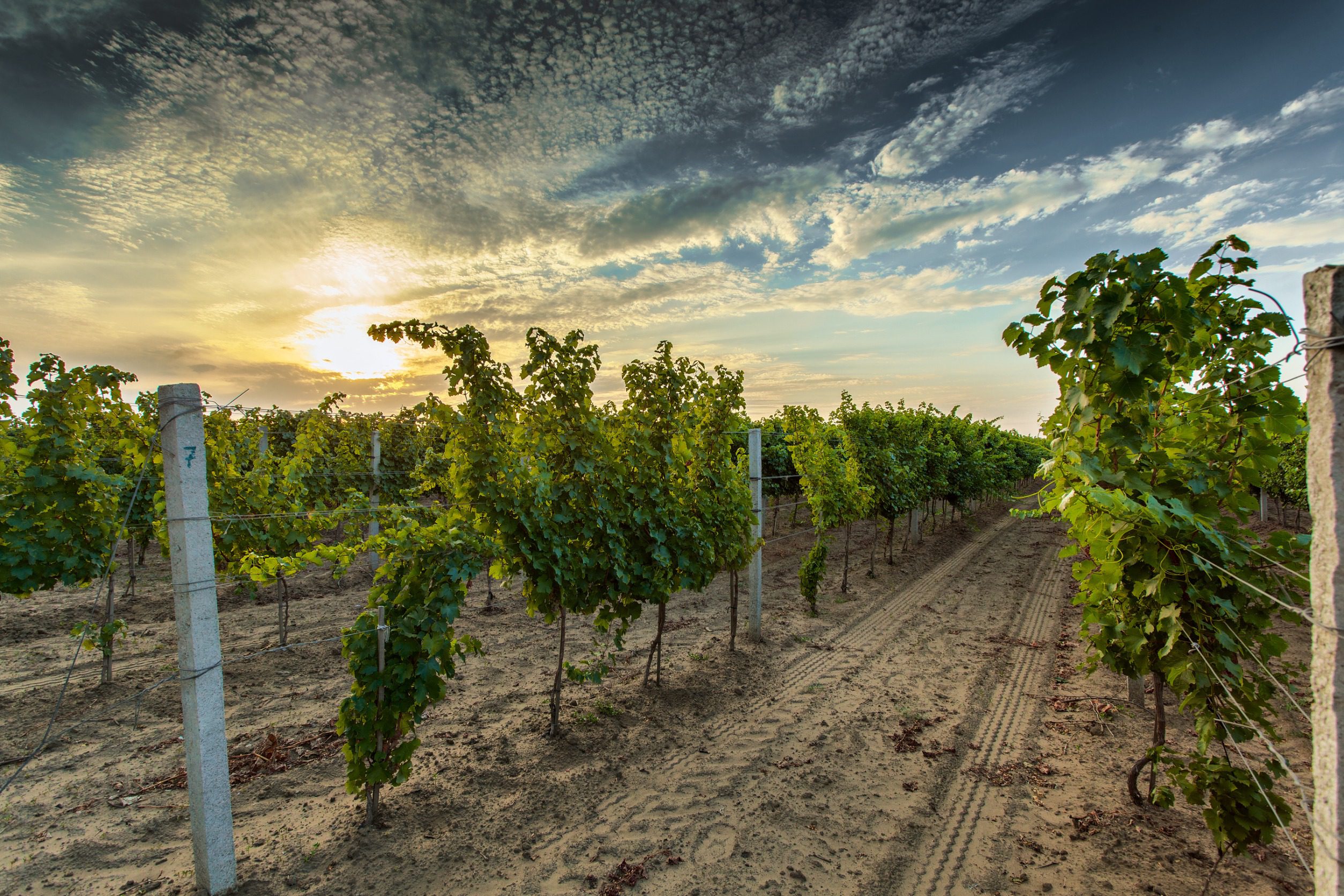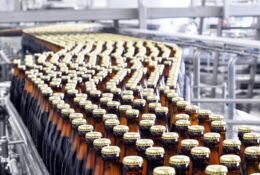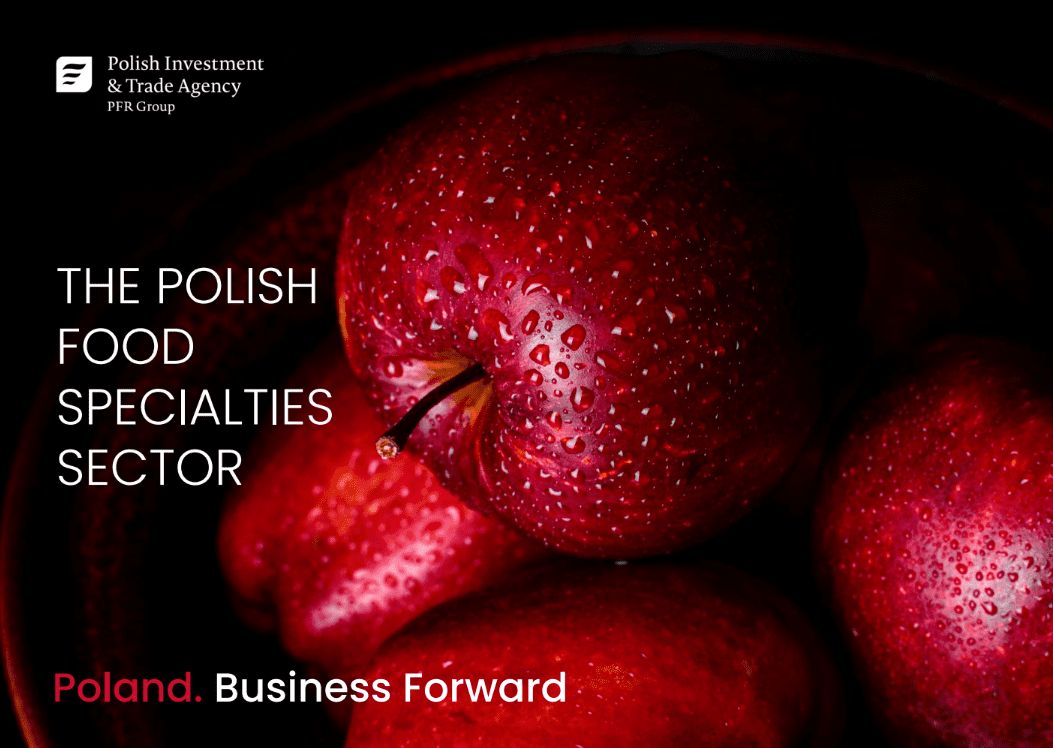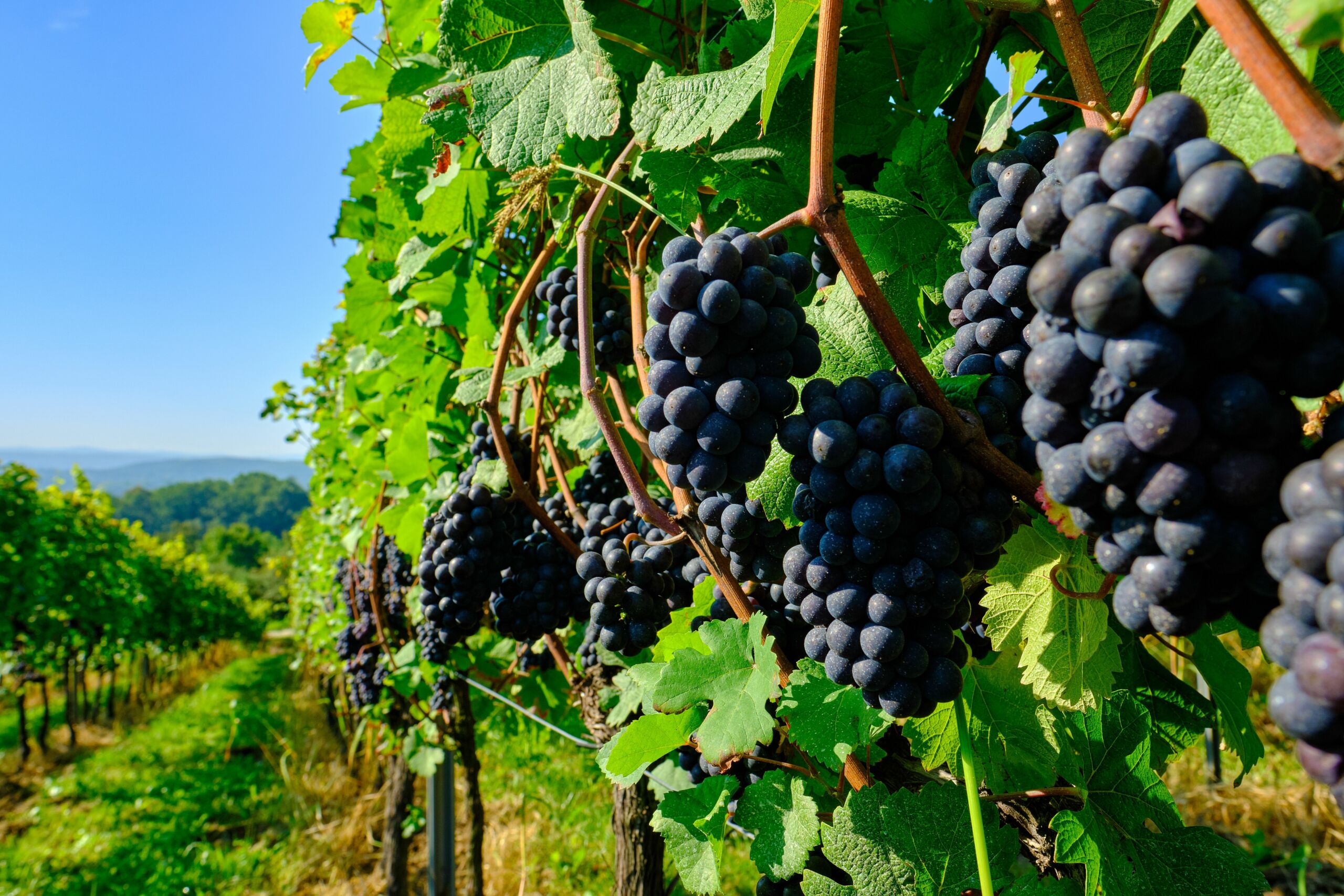Polish wines and vineyards
11.07.2023

According to the National Support Centre for Agriculture (KOWR) data, which was updated on 15th June this year, there are over 500 registered vineyards in Poland. Their total area exceeds 750 hectares. Only 29 of them have declared wine production plans for the 2023/2024 marketing year.
Despite pre-war traditions, wine in Poland is an area that is only now being revived, after years of limited activity. According to many commercial portals, the current activities may in the future, result not only in the revival of the Polish wine sector, but also in its significant development. This is thanks to by the activities of nurserymen, botanists and oenologists who are attempting to grow vine varieties resistant to Polish climatic conditions. Currently, the wine sector is divided into two main groups – growers and wine producers. The main institution supervising the development of the sector is the National Support Centre for Agriculture. In addition to monitoring the sector, the institution also conducts activities aimed at registering plantation.
KOWR also collects and publishes data on production plans and available stocks of alcohol in the country. At the beginning of each year, industry representatives are obliged to submit production declarations to the institution. In the middle of the year, KOWR collects data on their stocks.
In the list of wine producers in the 2023/2024 wine year, only 29 producers declared their will to produce. However, this does not necessarily translate into a significant decrease in production.
In addition to production activities in the wine sector, a number of initiatives are developing to promote the wine industry as widely as possible. Currently, more portals devoted to wine are appearing on the Internet. It is worth noting that, among other things, as part of local projects, including commercial projects and those implemented by local authorities, enotourism initiatives are born.
The interest in the development of the industry also affects the gradual expansion of the courses being offer by Polish Institutes of Higher Education. The West Pomeranian University of Technology in Szczecin prides itself on being the only one in Poland that conducts studies in plant cultivation and winemaking. In June of this year, Henkell Freixenet Polska announced that the “Winemaking – an exciting business” course will be launched in Toruń.
The Polish wine industry in numbers
According to KOWR data, interest in wine production is constantly growing – currently there are already 501 vineyards in the country. The register has been kept since the marketing year 2009/2010. The information made public confirms the growing interest in wine production. At the same time, the analysis of the data contained in it provides interesting information on the development of the sector and its production capabilities.
The largest development, in terms of the growth in the number of producers, took place in the 2019/2020 marketing year. At that time, 64 producers were added to the register. At the same time, there was the largest increase in the area cultivated by vines – by 88.99 hectares.
These results do not coincide with the largest increase in sales. The Polish wine sector celebrated its greatest triumphs in the 2018/2019 marketing year. At that time, producers sold a total of 6374.40 hector liters of wine. This is 2,410.74 hector liters more than in 2017/2018. It is worth noting that the same marketing year (i.e. 2018/2019) was the period of the greatest increase in terms of the number of harvests – 1 874 580 kg, compared to 802 829 in 2017/2018. Data on wine sales for the 2021/2022 marketing year are not yet available.
It is worth noting that it is currently not possible to compare this information with results from other European Union Member States. A number of summaries on the wine sector are available on the Eurostat website. Data on the Polish wine industry’s achievements are not available there.
Types of wines
KOWR data show that white wines play a dominant role in the production of Polish wine. In the marketing year 2021/2022, 12 083.71 hl of white wine and 6 358.08 hl of red wine were produced. Only in the marketing years 2013/2014, 2012/2013 and 2020/2011 were the output rates reversed. The available data does not distinguish by type – e.g. no data on sparkling wines.
According to the information on the website of the Polish Nurserymen Association (ZSP), 9 grape varieties are suitable for cultivation in Poland. However, it should be borne in mind that not every variety of this plant is suitable for making wine. Some are exclusively dessert varieties. The so-called “viticulture” is a very specialized field, bringing together a fairly narrow group of specialists. Some of them decide to make public information about the varieties they use, but not all. It is worth mentioning that the utilitarian group of vines includes the so-called processing varieties. Available commercial sources indicate the possibility of growing numerous varieties of this type. For climatic reasons, Polish growers choose varieties resistant to low temperatures. In some cases, e.g. periodic frosts, it is necessary to take unusual actions for other wine regions (e.g. shielding shrubs from the wind).
Laws
The activities of wine producers and winegrowers are regulated by a total of 3 legal acts at EU level and 7 at a National level.
EU legal acts include:
- Regulation (EU) No 1308/2013 of the European Parliament and of the Council of 17 December 2013,
- Commission Delegated Regulation (EU) 2018/273 of 11 December 2017,
- Commission Implementing Regulation (EU) 2018/274 of 11 December 2017,
As far as National legislation is concerned, the sector is governed by the following legal acts:
- Law of 14 June 1960 Code of Administrative Procedure,
- Law of 24 August 2001 Code of Conduct in Misdemeanour Cases,
- Law of 23 November 2012 Postal law,
- Act of 26 October 1982 on upbringing in sobriety and counteracting alcoholism,
- Act of 6 December 2008 on excise duty,
- Act of 10 February 2017 on the National Support Centre for Agriculture.
The most important legal regulations for the industry came into force last year. On 7 March 2022, the provisions of the Act of 2 December 2021 on wine products (Journal of Laws of 2022, item 24, as amended) entered into force. In accordance with the provisions of the legislator, the aforementioned National Support Centre for Agriculture (KOWR) became responsible for administering the production potential of wine sector products.
Wine regions
According to the enoturystyka.pl portal, there are 9 areas in Poland that specializing in wine production. These include the following regions: Szczecin-Gorzowski, Lubuski, Dolnośląski, Jurajski, Podgórzański, Sandomiersko-Świętokrzyski, Jasielski, Małopolska Gorge Wisły, Podkarpacki. KOWR data indicate that the largest number of registered vineyards is located in the Opolskie Voivodeship (over 140). The next two positions are occupied by the Małopolskie and Śląskie Voivodships (approx. 90). Also Dolnośląskie, Podkarpackie, Lubuskie and Lubelskie can boast of a greater number of grape plantations (over 50 registered).
Sources
The main source of information on the development of the sector is the National Organization for Agricultural Support. Nevertheless, the activity of entrepreneurs resulted in the creation of numerous commercial initiatives, such as the development of portals specializing in the subject of wine production and issues related to the tourist segment of this industry – enotourism. Among the most popular are, among others, enoportal.pl and the winicjatywa.pl website. There are also organizations associating wine growers and producers.
Spis treściTable of contents
- Everything
- News (4)
- Events (1)
-
 Article
ArticlePoland at the forefront of beer producers in the EU
With a production of 3.5 billion liters, Poland ranks third among EU producers
 Article
ArticleThe Polish Food Specialities Sector – a PAIH report
According to the Polish Investment and Trade Agency’s quarterly report, “The Polish Food Specialitie…
-
 Article
ArticlePoland at the forefront of beer producers in the EU
With a production of 3.5 billion liters, Poland ranks third among EU producers
 Article
ArticleThe Polish Food Specialities Sector – a PAIH report
According to the Polish Investment and Trade Agency’s quarterly report, “The Polish Food Specialitie…
The Export Promotion Portal uses cookies to make it easier for users to use the website and for statistical purposes. If you do not block these files, you agree to their use and saving in the memory of your computer or other device. Remember that you can change your browser settings to block the storage of cookies. More information can be found in Privacy Policy and Terms and conditions.


